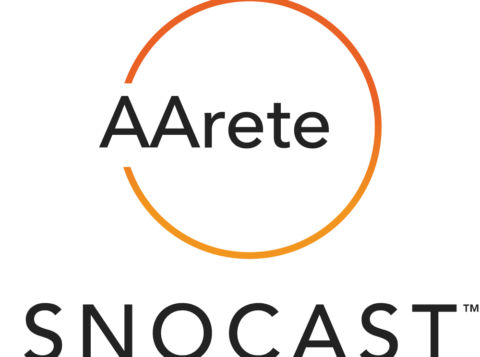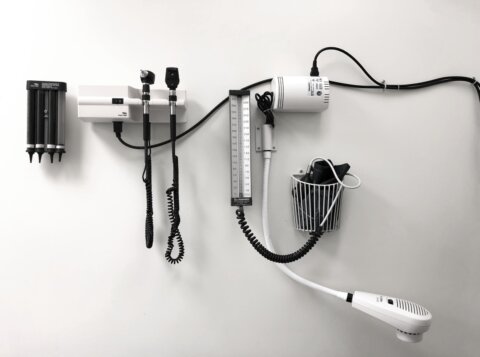Medical Billing Needs To Catch Up With Modern Medicine
This an AArete Healthcare Payer insight
America boasts the greatest advancements in medical research in the world: more Americans have received the Nobel Prize in medicine than Europe, Canada, Japan, and Australia combined, which together have twice the American population. America has potential to lead the globe in cutting edge medical care, delivering service that is paid for fairly, accurately, and efficiently. It’s time our payer system caught up with our world-class talent and facilities.
The process of connecting the American healthcare ecosystem’s 3Ps (Payer, Provider, and Patient) has been marred with inefficiencies and inconsistencies. Nowhere is this more evident than in the billing area, where inaccuracies and disputes are commonplace. Resolving these issues is both time consuming and labor intensive—payers often have to jump through hoops to get to the real essence of a provider’s claim and translate accurately the real costs to providers and what to collect from patients. Such billing challenges, or even simple opacity, are not isolated instances—they are embarrassingly prevalent. A 2016 study by the Medical Billing Advocates of America found errors in three out of the four bills they reviewed.
These inefficiencies have added to a fractured, disconnected healthcare ecosystem; patients harbor animosity toward health insurance payers when they are billed more than they expected, while payers and providers are in constant dispute over reimbursement and shared payment arrangements. As a result, the tension can be felt across all constituents.
What’s behind these billing errors? Provider administrators sometimes enter incorrect procedure and diagnostic codes. A simple typo might exponentially increase the cost of the claim. For example, with a single misplaced or misread digit, an X-ray on an ankle might incorrectly register as an image of the blood flow to a brain. Many of these inaccuracies can be attributed to well-meaning human error—and payers need to develop strategies to combat these relatively benign mistakes. They must move forward and work together with providers, because playing the blame game harms every facet of the delicate healthcare ecosystem. But this doesn’t completely rule out the possibility of fraud. In some cases, providers have generated inflated revenue by intentionally using the wrong billing code (a practice commonly called “upcoding”) or incorrectly using modifiers to bypass the review process (e.g., the use of Modifier 59 to report distinct procedural services not normally reported together).
Correcting billing errors is not just a matter of increasing insurance payers’ bottom line—it’s about consumer protection. For example, a patient might need an emergency surgery for a stomach ulcer. The surgeon might be in-network, while the anesthesiologist is not. This logistical error on behalf of the provider results in the patient having to pay thousands of dollars out of pocket. The disgruntled patient may then file a complaint with the payer, who isn’t responsible for this error, yet must dedicate customer service labor to serving as the intermediary between the patient and the hospital. This unnecessary abrasion can negatively impact payers reputationally as well as result in sanctions by a government entity.
In a measure to alleviate America’s healthcare billing crisis, some forward-looking payers are starting to introduce approaches backed by innovative technology that facilitate greater accuracy of billing transactions between payers and providers, ultimately benefitting all parties involved. These new initiatives are starting to help prevent payers from hemorrhaging money. Adopting them means championing payment integrity as an ethos—meaning not paying for services that are outside the insurance payers’ regulatory and contractual obligation to pay.
Getting there, however, is easier said than done. Pursuing payment integrity is a constant game of whack-a-mole rife with genuine mistakes. And unfortunately, some provider organizations occasionally have bad actors with a vested interest in receiving more than their fair share of reimbursement for their services.
In deploying technology to get to more accuracy and efficiency, payers need to gain an understanding of the gray area between business and IT. It’s not just knowing about the features of a solution offered by vendors such as Optum, Cotiviti, or TPG Capital—it’s about knowing when it’s appropriate to use them. The company providing technical solutions to a specific payer must first fully comprehend the nuances of said payer’s business infrastructure. Only then can they deploy a solution that molds to their specific needs. To complete this task successfully requires a multifaceted approach with a holistic understanding of the business as well as the specific ways IT can help.
The ideal payer focuses both on business decisions and applied technology; they develop an approach that is synergistic, leveraging talent to orchestrate a sustainable process. Technical resources are much more effective when combined with business acumen, and business decisions are much smarter when backed by technology. The balance lies in examining existing solutions that are not performing properly (characterized partly by an overage of payment adjustments or recovery activities).
These solutions need to be set up, preferably in real-time, configured and implemented correctly, but the challenge is compounded when the payer is attempting to leverage an existing legacy technology stack—thus requiring an additional element to incorporate new technology as well as additional vendors. This can prove very challenging to CIOs and payer organizations as a whole.
Where is the future of the technical side headed? Artificial intelligence (AI) has greatly transformed the landscape of the healthcare billing system for the better. Payers that can successfully harness this capability will realize increased profitability while seeing providers and patients file fewer appeals and grievances. To gain the most benefit from AI, payers need to incorporate a recovery unit within their system that can apply machine learning (ML) and advanced algorithms to determine if a particular claim was paid in accordance with payer policies, regulatory guidelines, industry standards and contractual terms.
But it’s even more important to take that logic and place it further upstream – creating a future where the incorrect payment doesn’t happen in the first place. To do so, payers are starting to put in place some highly advanced technologies, systems that aren’t only transacting but are intelligent, applying logic to these transactions, and continuously learning from them.
Payers must also become aware that the issue is no longer simply “exception management,” but omissions as well. Let’s say an over-65 patient with COPD, diabetes, and a history of heart disease goes to a doctor. Based on those conditions, this patient would be qualified for a risk adjustment premium from Medicare. Risk adjustment enables payers to receive higher reimbursement for managing a chronic condition, considering the need for ongoing care management.
Let’s also say there is another patient with the same attributes as Patient A—the same conditions, diagnostic codes, and history of chronic treatment—but this person has not been flagged for risk adjustment. Patient A’s reimbursement is going to be higher than Patient B’s because the latter’s system has not filled in the omission. This results from a provider either forgetting to mark down Patient B’s chronic condition or coding it wrong—where everything else is equal except for that one particular code. In this case, the system can digest that information and make on-the-fly recommendations. Because Patient B checks off nine out of 10 boxes, the system can deduce that Patient B should be eligible for risk adjustment because of his chronic condition, even though this patient’s chart doesn’t explicitly say so.
As technology has evolved, so have the needs of the modern-day health insurance company. While transactions are smarter, payers are no longer interested in a big black box that does everything. They want purposeful applications built to specialize in unique payment issues. Taking a piece-by-piece approach to correcting billing errors might seem costly and labor intensive, but it pays off in the long run. Success will be about creating a chain where every link operates according to its strong suits. The end goal for payers is to get to transaction optimization. Only then will billing disputes be prevented—ushering in an age of seamless, efficient, and profitable healthcare, which will benefit payers, providers and patients alike.
Originally published in Electronic Health Reporter, January 2023
Learn more about AArete’s Payment Intelligence solutions



























































































